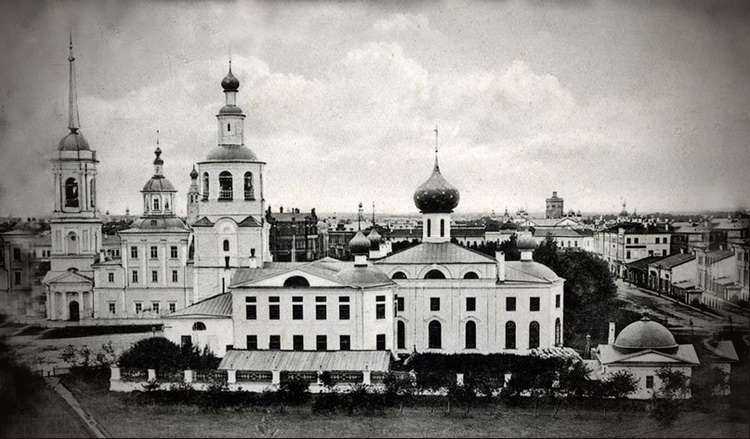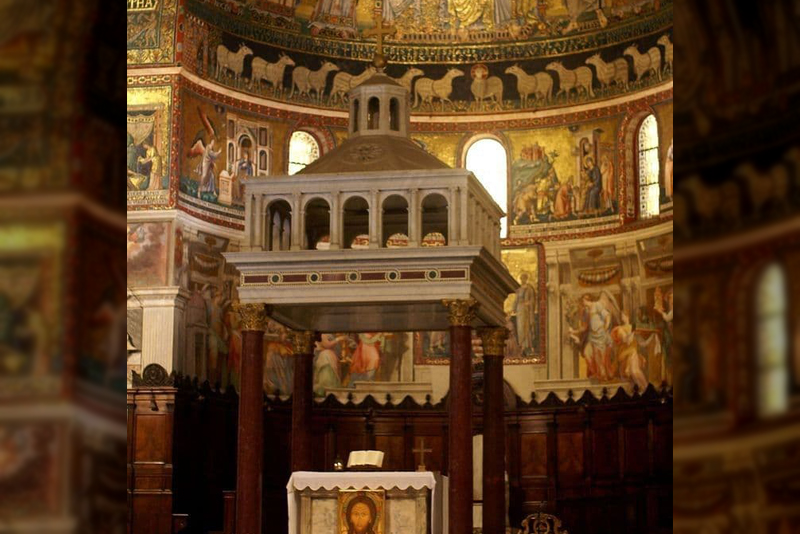
Once there were a considerable number of them in Russia. The very name “one-day” (russian – obydenny) sounds quite unusual. And indeed, these are churches that were built in just one day. Sometimes work on such a building began when it was still dark, on the night of a new day, but its construction and consecration must certainly have taken place before sunset. One would have thought what kind of church can be built in a day, and why did such haste arise?
The history of each such temple structure is interesting in itself, but there is one thing that connects them all. Most of such churches that existed earlier were built during periods of pestilences – severe epidemics of infectious diseases that often raged in antiquity and were accompanied by high mortality. They were built for one reason – to stop endemic mortality. Of course, representatives of the scientific world, and people far from faith, are very critical of such measures taken by our ancestors. They explain this by ancestors’ lack of education, illiteracy and superstitious religiosity. At the same time, they pointed out that instead of holding quarantine measures, the community of believers was engaged in the construction of a church, which contributed to the spread of infection due to a large concentration of people.
However, it is unreasonable to blame the entire population of ancient Russia for absolute ignorance and superstition. It is true that medicine of that era, which was still at the level of craftsmanship, was really powerless against many diseases, especially such as smallpox, cholera, pulmonary and bubonic plague. However, certain simple rules of personal hygiene existed and the state has always taken a number of sanitary measures to prevent the spread of infection. First of all, during epidemics, they separated sick community members from healthy ones, isolated the sites of infection, around which there were outposts. The bodies of those who died of the desease were to be buried outside the boundaries of a settlement or town. The houses where the sick lived were fumigated with wormwood and juniper.Those dwellings where the whole family died were prescribed to be burned completely. There was even a disinfection of outposts on which bonfires were constantly burning. Monetary units were washed in water with vinegar. By the way, the recovery or death of the last patient was considered evidence of the cessation of pestilence. Obviously, these measures were not entirely effective, and perhaps not everyone followed them due to certain circumstances. But in those days it couldn’t have been otherwise.
But every believer knew and understood that no misfortune could happen without God’s providential permission. The joint construction of one-day church was a kind of act of collective repentance and a vow that was given to God, whether by the whole Orthodox community of a particular village, or by the population of an entire town or region. That is why such buildings were often called votive. One-day churches performed the function of a certain symbol, around which people with faith, prayer, fast and repentance united for the sake of general salvation from desease by a spiritual feat. Orthodox Christians, gathering to perform such an important joint charitable deed, showed their hope for God’s mercy.The initiators of the creation of one-day churches could be both ordinary believers, and representatives of the clergy or someone from the princely family. The Complete Collection of Russian Chronicles contains many reports that after the construction of one-day churches in one place or another the epidemic there stopped! You can guess and talk about it as much as you like, attributing everything to a simple coincidence or something else, but this is really an amazing fact that cannot be explained by anything, but Divine Providence. Sometimes, after the construction of such churches, icons for them were painted in one day, which after became the main shrines of the town or settlement. It is indisputable that church buildings of this kind were, as a rule, short-lived, small in size (about 6 x 5 metres), of a simple construction and made of only wood, because it was almost impossible to build a church from another material in such a short time. The wood used for the construction was fresh, just cut down. On this day, everyone involved in the construction put on clean clothes. Sometimes stone churches or even cathedrals were built at the place of wooden pestilence churches. Such a cathedral in the name of All-Merciful Savior was built in Vologda in 1688 on the site where there was a dilapidated one-day church, which was built in October 1654, during the largest plague epidemic of the 17th century that raged in Russia.

It is difficult to say when exactly the custom of building one-day churches on the territory of the Old Russian state appeared. It is believed that the first votive church building was created in 996 in Vasilkovo near Kiev under Prince Vladimir, who, fleeing from the Pechenegs who pursued him during the war, gave God a promise to build a church in case of his salvation. However, this church cannot be considered one-day in the full sense. A pious custom to build one-day churches to get rid of pestilence existed everywhere in Russia. But the largest number of one-day churches were in the north of the state – in the Vologda, Novgorod and Pskov regions, which most often suffered from epidemics. One-day buildings were built in Moscow as well. The most active construction of such temples began in the late 13th century. At that time, pestilences began to take on the scale of epidemics with high mortality among different segments of the civilian population. According to the references in the documents, the last one-day church was built during the plague by the townspeople of Kostroma in 1757.
Today the tradition of building churches within one day has again revived. So, to mark the 1020th anniversary of the Baptism of Russia on December 3, 2008, on the eve of the Feast of the Entry of the Most Holy Theotokos into the Temple, three churches were simultaneously built in the cities of Kiev, Moscow and Minsk. This became a symbol that reminds everyone that our three peoples came out of one baptismal font. It is hoped that this pious custom will be developed, but the reasons for the construction of one-day churches will be different, more joyful.
Source: https://pravlife.org/ru/content/obydennye-hramy-rusi-pochemu-ih-vozvodili-vo-vremya-epidemiy



